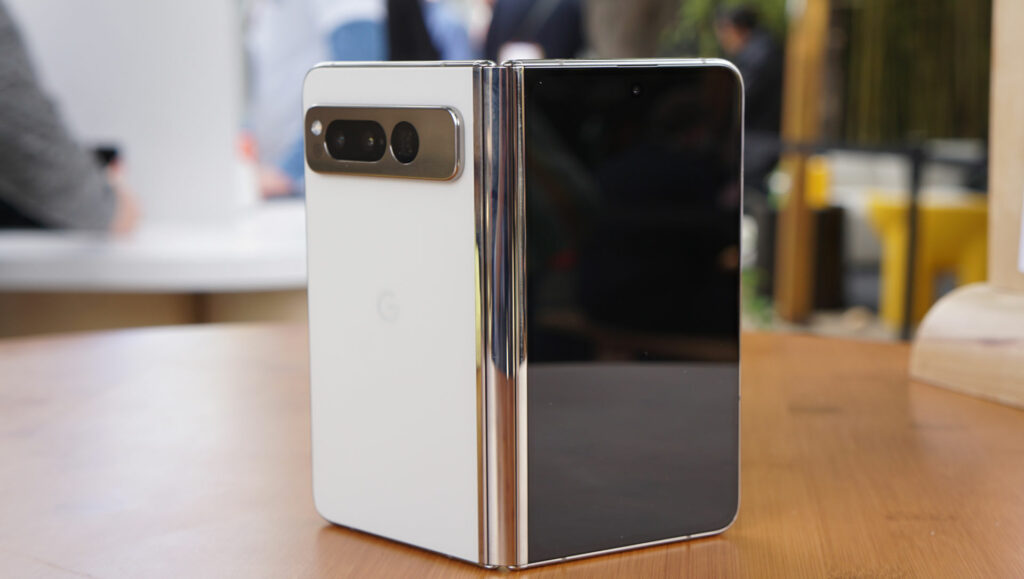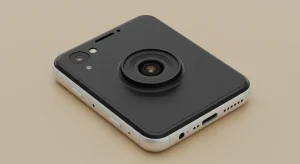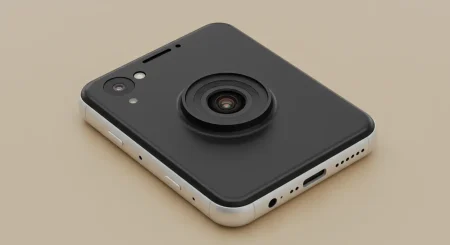
- Google’s Pixel Fold 2 is anticipated to be a significant addition to the foldable phone market.
- The Pixel Fold 2 may feature the Tensor G4 chipset instead of the expected Tensor G3 chipset.
- The launch timeline for the Pixel Fold 2 may be affected by this chipset upgrade, with a fall launch possible.
- The Pixel Fold 2 is currently going through the early stages of Engineering Validation Test (EVT).
- The upcoming Tensor G4 chipset is expected to provide a slight upgrade from the Tensor G3.
- The Pixel Fold 2 prototypes boast 16GB of LPDDR5 RAM and 256GB of UFS 4.0 storage, a significant improvement over its predecessor.
In 2023, the foldable smartphone market saw remarkable growth with the arrival of several new models and product lines. Among them, Google’s Pixel Fold made a grand entry into the market in May. This book-style phone featured a foldable display and was powered by Google’s custom-made Tensor G2 chipset. It was a significant addition to the foldable phone market, which was already gaining momentum, and its arrival marked a new milestone in the history of smartphones.
The anticipated successor: Pixel Fold 2
This year, Google is set to continue its foldable journey with the Pixel Fold 2. However, compared to the other three Pixel devices slated for launch this year (Pixel 9, Pixel 9 Pro, and Pixel 8a), news about the Pixel Fold 2 has been relatively scarce. But thanks to an anonymous source, we’ve managed to uncover some intriguing details about this upcoming device.
- See also: Get a FREE Google Pixel 7a in the US
Chipset conundrum: Tensor G3 or G4?
An anonymous source has disclosed that Google has been conducting internal tests of its upcoming Pixel Fold 2 for several months. It is interesting to note that the early prototypes were equipped with Google’s Tensor G3 chipset, which is codenamed “zuma“; however, the recent models have been upgraded to the Tensor G4 chipset, which is yet to be released and is codenamed “zumapro.”
It’s been observed that the Pixel Fold 2 might come with the Tensor G4 chipset instead of the previously expected Tensor G3 chipset. Although this has not been confirmed yet, the recent mid-development shift hints at this possibility. It’s interesting to note that a similar scenario took place with the Pixel Tablet, where it was initially planned to have the first-generation Tensor chipset but eventually released with the second-generation Tensor G2 chipset.
Launch Window: A shift in schedule?
So, there are rumors that Google might upgrade the chipset, and if it does, it could potentially affect the launch timeline for the new foldable device. The original Pixel Fold was unveiled at Google I/O in May 2023, and it’s possible that the successor could follow the same timeline. However, if Google decides to equip the Pixel Fold 2 with the Tensor G4, the launch could be pushed to the fall, aligning with Google’s usual schedule for unveiling new Tensor chipsets. Exciting, isn’t it?
Production status: still early days
The Pixel Fold 2 is currently going through the early stages of the Engineering Validation Test (EVT) – exciting stuff! However, this also means that it’s still a few steps away from being ready for mass production. So, unfortunately, it’s looking like we won’t be seeing the Pixel Fold 2 at Google I/O in May 2024. But, good things come to those who wait, right?
Tensor G4: what to expect?
Although the details regarding the Tensor G4’s specifications have yet to be released, it is anticipated to provide a slight upgrade from the Tensor G3. The upcoming chipset is expected to incorporate a fusion of Arm’s Cortex-X4, A720, and A520 CPU cores. Unverified reports indicate that Samsung may be responsible for the fabrication of the Tensor G4, with Google purportedly making the switch to TSMC for the Tensor G5.
Pixel Fold 2: a new RAM benchmark?
According to reports, the Pixel Fold 2 prototypes boast an impressive 16GB of LPDDR5 RAM and 256GB of UFS 4.0 storage, a significant improvement over its predecessor’s 12GB of LPDDR5 RAM and 256GB of UFS 3.1 storage. This would be a first for Google, as they have yet to ship a smartphone with more than 12GB of RAM. This upgrade is in line with the company’s vision to offer more on-device AI features through its new AI assistant, Pixie.
With UFS 4.0 storage, users can expect faster file loading times, improving the overall experience with tasks such as app and game loading. While other storage options may be available, we will need to wait until closer to launch for confirmation.

![Download Vivo X200 FE GCam Port [Most Compatible Version] Download Vivo X200 FE GCam Port [Most Compatible Version]](https://static.droidfeats.com/wp-content/uploads/2025/07/vivo-x200-fe-in-four-aesthetic-color-options.png-300x179.webp)




![Download Vivo X200 FE GCam Port [Most Compatible Version] Download Vivo X200 FE GCam Port [Most Compatible Version]](https://static.droidfeats.com/wp-content/uploads/2025/07/vivo-x200-fe-in-four-aesthetic-color-options.png-450x268.webp)
